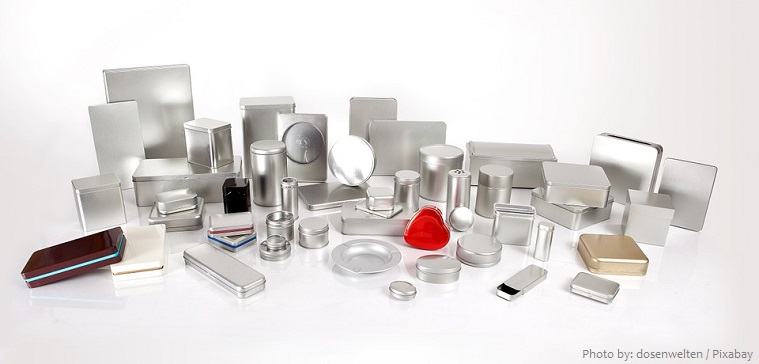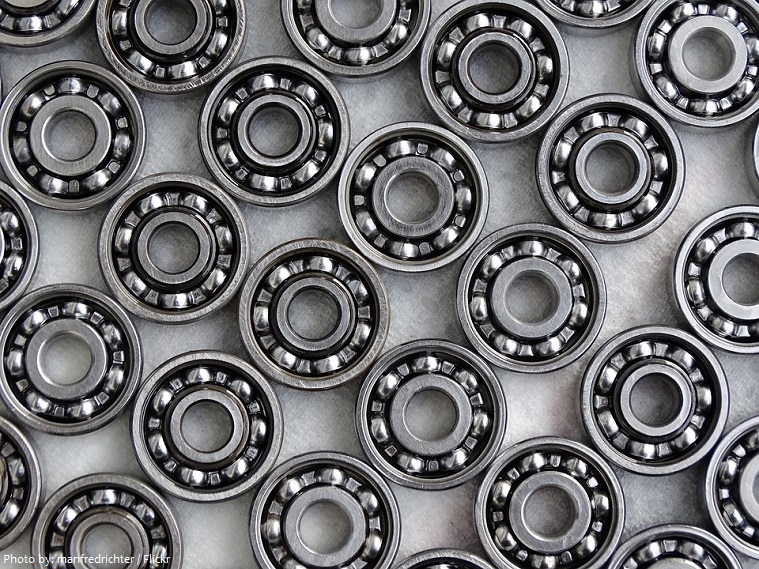Tin is a chemical element with the symbol Sn and atomic number 50.
The name “tin” is an ancient Anglo-Saxon word.
The symbol Sn, comes from the Latin word for tin – stannum. The word stannum itself derives from an Indo-European word stag or stagnum, meaning “dripping.” Tin was probably described like this because it melts easily.
Tin makes up only about 0.001 percent of the earth‘s crust, but it was well known in the ancient world.
It is nontoxic, ductile, malleable, and adapted to all kinds of cold-working, such as rolling, spinning, and extrusion.
Tin is resistant to oxidation in air and resists corrosion in sea water, distilled water and tap water.
It melts at low temperatures of about 232 °C (450 °F).
Bending a bar of tin produces a characteristic squealing sound called “tin cry.”
Tin is widely used for plating steel cans used as food containers, in metals used for bearings, and in solder.
The first tin alloy used on a large scale was bronze, made of 1/8 tin and 7/8 copper, from as early as 3000 BC.
Bronze changed the world when it was first invented, starting the Bronze Age. People organized themselves more, because making tools from bronze was harder than making them from rock and wood like they did before.
Around 600 BC, pure metallic tin was produced.
When extensive tin deposits were found in England, traders brought the precious metal to countries in the Mediterranean area, but kept the source a secret. It wasn’t until 310 BC that the Greek explorer Pytheas discovered the location of the mines near what is now Cornwall, England. That are the oldest tin mines in the world.
The use of tin as a plating material dates to the time of the Roman Empire, when copper vessels were coated with tin to keep them bright looking.
Thin sheets of iron coated with tin, called tinplate, became available in England during the mid-1600s and were used to make metal containers.
In 1810, Pierre Durand of France patented a method of preserving food in sealed tinplate cans. Although it took many years of experimenting to perfect this new technique, tin cans began replacing bottles for food packaging by the mid-1800s.
In 1839, Isaac Babbitt of the United States invented an antifriction alloy, called Babbitt metal, which consisted of tin, antimony, and copper. It was widely used in bearings and greatly assisted the development of high-speed machinery and transportation.
In 1952, the firm of Pilkington in England revolutionized the glassmaking industry with the introduction of the “float glass” method for the continuous production of sheet glass. In this method, the molten glass floats on a bath of liquid, molten tin as it cools. This produces a very flat glass surface without the rolling, grinding, and polishing operations that were required prior to the introduction of this method.
Up until the early 1900s tin foil was used for wrapping food. Aluminium foil is now used but the phrase tin foil is still widely used.
Tin is the most tonally resonant of all the metals and lead tin alloys were traditionally used for making organ pipes. The composition of the alloy dictates the tone of the sound produced.
Beneath the gold, the Oscar statuettes interior is a metal mixture called Britannium, also called Britannia metal. It is an alloy of tin (93 percent), antimony (5 percent), and copper (2 percent). It’s known for its smooth texture and silvery appearance.
China is the world’s largest producer of tin.
Tin is the 49th most abundant element on Earth.




